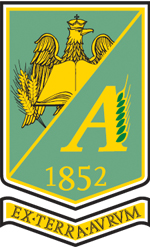Published in Scientific Papers. Series A. Agronomy, Vol. LX
Written by Galia PANAYOTOVA, Svetla KOSTADINOVA, Neli VALKOVA
The influence of phosphorus and combined N-P fertilization on durum wheat grain quality under conditions of long term fertilizing experiment in cotton-durum wheat crop-rotation during the period 2011-2013 was studied. The treatments were: N0P0; N0P80; N0P120; N0P160; N120P80; N120P120; N120P160. The experimental design was the method of Latin square with trial plot size 50 m2 in four replications. The test weight and 1000 kernel weight of durum wheat variety. Progress slightly depended on phosphorus fertilization at rates of P80-160. Average for the period, the largest grain of 59.96 g was obtained after the high phosphorus rate of 160 kg.ha-1 and in years with favorable conditions during vegetation. With contents of mineral nitrogen in soil below 40 mg.kg-1soil and phosphorus fertilization at rates P80-160 was obtained total vitreousness in the range of 49.20 - 53.0% and crude protein concentration within 12.37 - 12.60%. When N120 was added, vitreousness of grain increased to 79.38 - 84.52% and the protein concentration in the grain increased significantly to 14.95%. Combined fertilization N120P80 was the optimal system, wherein grain was obtained with the highest content of wet (34.07%) and dry (13.10%) gluten, while the combination of nitrogen rate N120 and higher than P80 tended to decrease the gluten content. Drought at the end of durum wheat vegetation in June led to grain with higher vitreousness and content of the wet and dry gluten.
[Read full article] [Citation]




